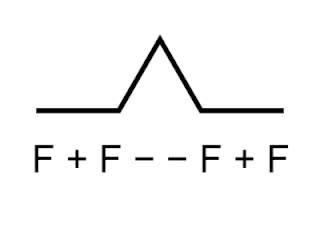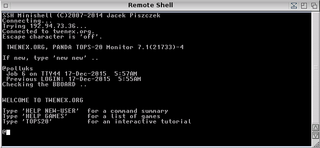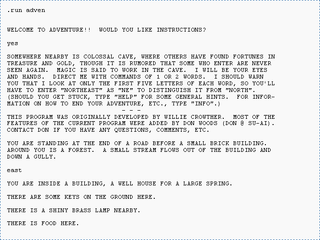This article needs additional citations for verification .(August 2023) |
This article needs additional citations for verification .(August 2023) |
FILECOMP was a programming language developed at Bolt, Beranek and Newman (BBN). It was one of the three variants of JOSS II (along with TELCOMP and STRINGCOMP) that were developed by BBN.
The language was developed by Jordan Baruch specifically for the GE MEDINET project (Ed Yourdon's first "Death March” project). It added implicit file handling capabilities and was influential on MUMPS. [1]
Filecomp or FileComp was a type composition language that ran on the RCA 1600 computer attached to the RCA Graphic Services Division (GSD) VideoComp CRT typesetter.
The VideoComp was developed by Dr. Rudolf Hell of Kiel, Germany, as the Digiset, and marketed by RCA GSD in the U.S. in the late 1960s and early 1970s as the VideoComp. When RCA got out of the computer business, support of the VideoComp was taken over by Information International, Inc. or Triple I.
Filecomp resembled an odd mix of Fortran, Cobol, Assembly and RCA GSD Page-1 Composition Languages. The user would write a program in Filecomp to read a computer data base or text file and compose it for typeset output.
BCPL is a procedural, imperative, and structured programming language. Originally intended for writing compilers for other languages, BCPL is no longer in common use. However, its influence is still felt because a stripped down and syntactically changed version of BCPL, called B, was the language on which the C programming language was based. BCPL introduced several features of many modern programming languages, including using curly braces to delimit code blocks. BCPL was first implemented by Martin Richards of the University of Cambridge in 1967.

Logo is an educational programming language, designed in 1967 by Wally Feurzeig, Seymour Papert, and Cynthia Solomon. Logo is not an acronym: the name was coined by Feurzeig while he was at Bolt, Beranek and Newman, and derives from the Greek logos, meaning word or thought.
MUMPS, or M, is an imperative, high-level programming language with an integrated transaction processing key–value database. It was originally developed at Massachusetts General Hospital for managing hospital laboratory information systems.

The PDP-1 is the first computer in Digital Equipment Corporation's PDP series and was first produced in 1959. It is famous for being the computer that was most important in the creation of hacker culture at Massachusetts Institute of Technology, BBN and elsewhere. The PDP-1 is the original hardware for playing history's first game on a minicomputer, Steve Russell's Spacewar!
The RCA Corporation was a major American electronics company, which was founded in 1919 as the Radio Corporation of America. It was initially a patent trust owned by General Electric (GE), Westinghouse, AT&T Corporation and United Fruit Company. In 1932, RCA became an independent company after the partners were required to divest their ownership as part of the settlement of a government antitrust suit.

In computing, time-sharing is the sharing of a computing resource among many users at the same time by means of multiprogramming and multi-tasking.

The TOPS-20 operating system by Digital Equipment Corporation (DEC) is a proprietary OS used on some of DEC's 36-bit mainframe computers. The Hardware Reference Manual was described as for "DECsystem-10/DECSYSTEM-20 Processor".

Typesetting is the composition of text by means of arranging physical type in mechanical systems or glyphs in digital systems representing characters. Stored types are retrieved and ordered according to a language's orthography for visual display. Typesetting requires one or more fonts. One significant effect of typesetting was that authorship of works could be spotted more easily, making it difficult for copiers who have not gained permission.

Raytheon BBN is an American research and development company based in Cambridge, Massachusetts, United States.

The Advanced Research Projects Agency Network (ARPANET) was the first wide-area packet-switched network with distributed control and one of the first computer networks to implement the TCP/IP protocol suite. Both technologies became the technical foundation of the Internet. The ARPANET was established by the Advanced Research Projects Agency (ARPA) of the United States Department of Defense.

Colossal Cave Adventure is a text-based adventure game, released in 1976 by developer Will Crowther for the PDP-10 mainframe computer. It was expanded upon in 1977 by Don Woods. In the game, the player explores a cave system rumored to be filled with treasure and gold. The game is composed of dozens of locations, and the player moves between these locations and interacts with objects in them by typing one- or two-word commands which are interpreted by the game's natural language input system. The program acts as a narrator, describing the player's location and the results of the player's attempted actions. It is the first well-known example of interactive fiction, as well as the first well-known adventure game, for which it was also the namesake.
Interlisp is a programming environment built around a version of the programming language Lisp. Interlisp development began in 1966 at Bolt, Beranek and Newman in Cambridge, Massachusetts with Lisp implemented for the Digital Equipment Corporation (DEC) PDP-1 computer by Danny Bobrow and D. L. Murphy. In 1970, Alice K. Hartley implemented BBN LISP, which ran on PDP-10 machines running the operating system TENEX. In 1973, when Danny Bobrow, Warren Teitelman and Ronald Kaplan moved from BBN to the Xerox Palo Alto Research Center (PARC), it was renamed Interlisp. Interlisp became a popular Lisp development tool for artificial intelligence (AI) researchers at Stanford University and elsewhere in the community of the Defense Advanced Research Projects Agency (DARPA). Interlisp was notable for integrating interactive development tools into an integrated development environment (IDE), such as a debugger, an automatic correction tool for simple errors, and analysis tools.

Wallace "Wally" Feurzeig was an American computer scientist who was co-inventor, with Seymour Papert and Cynthia Solomon, of the programming language Logo, and a well-known researcher in artificial intelligence (AI).
NLS, or the "oN-Line System", was a revolutionary computer collaboration system developed in the 1960s. Designed by Douglas Engelbart and implemented by researchers at the Augmentation Research Center (ARC) at the Stanford Research Institute (SRI), the NLS system was the first to employ the practical use of hypertext links, the mouse, raster-scan video monitors, information organized by relevance, screen windowing, presentation programs, and other modern computing concepts. It was funded by ARPA, NASA, and the US Air Force.

The Interface Message Processor (IMP) was the packet switching node used to interconnect participant networks to the ARPANET from the late 1960s to 1989. It was the first generation of gateways, which are known today as routers. An IMP was a ruggedized Honeywell DDP-516 minicomputer with special-purpose interfaces and software. In later years the IMPs were made from the non-ruggedized Honeywell 316 which could handle two-thirds of the communication traffic at approximately one-half the cost. An IMP requires the connection to a host computer via a special bit-serial interface, defined in BBN Report 1822. The IMP software and the ARPA network communications protocol running on the IMPs was discussed in RFC 1, the first of a series of standardization documents published by what later became the Internet Engineering Task Force (IETF).
BBN LISP was a dialect of the Lisp programming language by Bolt, Beranek and Newman Inc. in Cambridge, Massachusetts. It was based on L. Peter Deutsch's implementation of Lisp for the PDP-1, which was developed from 1960 to 1964. Over time the language was expanded until it became its own separate dialect in 1966.
Information technology (IT) is the use of computers to create, process, store, retrieve and exchange all kinds of data and information. IT forms part of information and communications technology (ICT). An information technology system is generally an information system, a communications system, or, more specifically speaking, a computer system — including all hardware, software, and peripheral equipment — operated by a limited group of IT users, and an IT project usually refers to the commissioning and implementation of an IT system.
The IARPA Babel program developed speech recognition technology for noisy telephone conversations. The main goal of the program was to improve the performance of keyword search on languages with very little transcribed data, i.e. low-resource languages. Data from 26 languages was collected with certain languages being held-out as "surprise" languages to test the ability of the teams to rapidly build a system for a new language.
Joseph A. Weisbecker was an early microprocessor and microcomputer researcher, as well as a gifted writer and designer of toys and games. He was a recipient of the David Sarnoff award for outstanding technical achievement, recipient of IEEE Computer magazine's "Best Paper" award, as well as several RCA lab awards for his work.
TENEX is an operating system developed in 1969 by BBN for the PDP-10, which later formed the basis for Digital Equipment Corporation's TOPS-20 operating system.